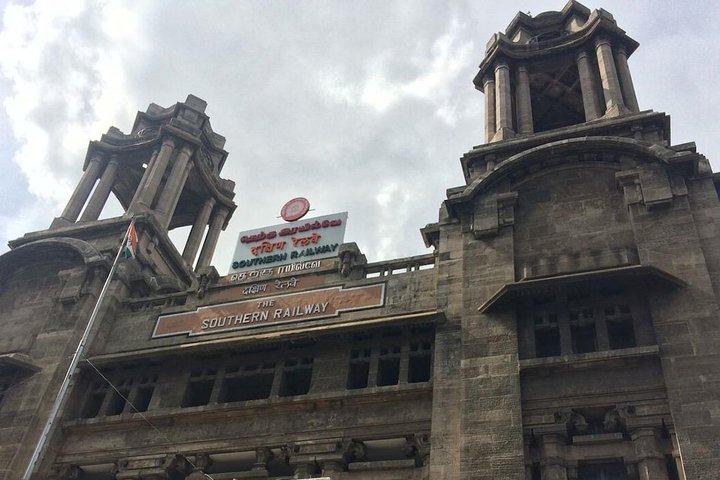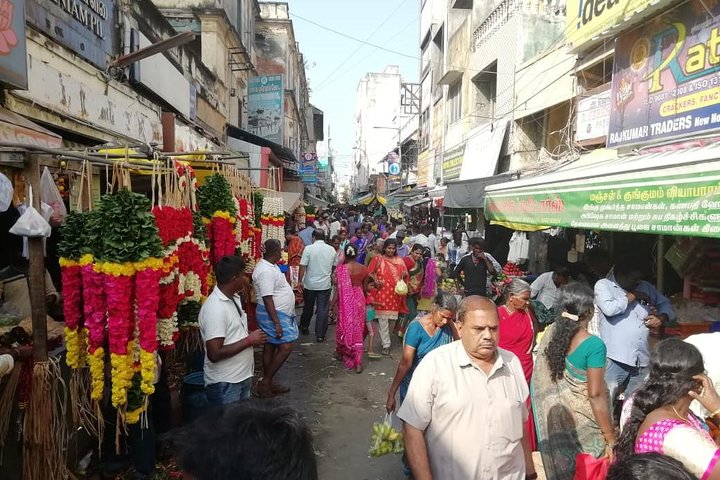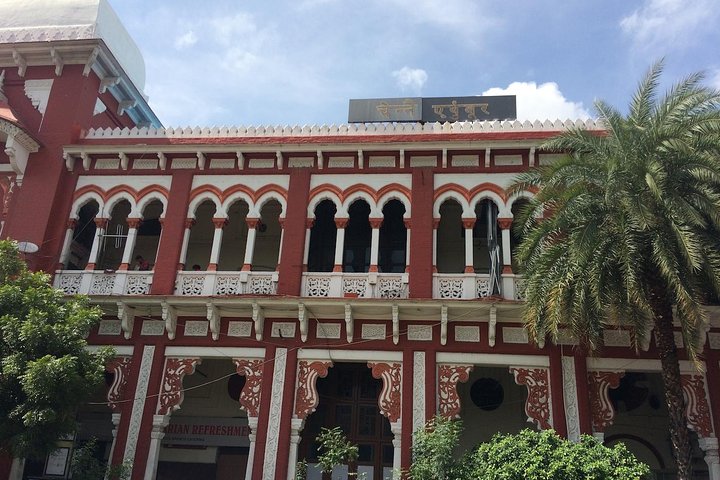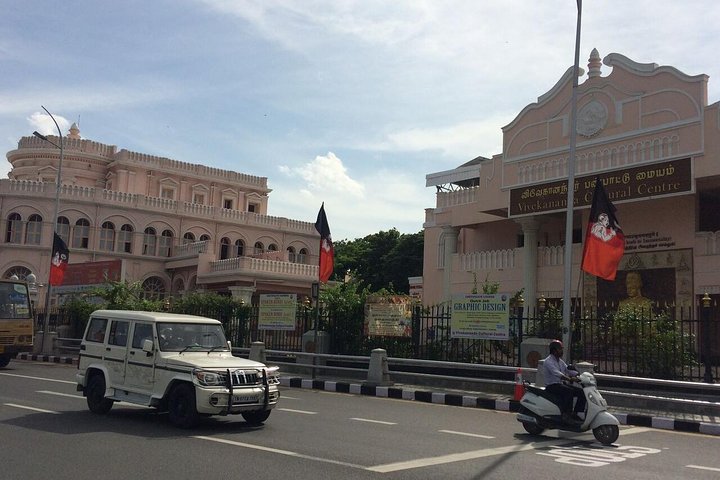British Buildings & the Story of Chennai walking tour with guide
Share this tour

Offered languages
- English
Story of Chennai through British Buildings is an immersive walking tour in Chennai. This tour is led by a cultural evangelist who will explain the history of these buildings as well as the fate of their masters.
Chennai was an important power centre during the British rule in India. Listen to the Chennai story through the buildings built in that period.
Over the 3 hours appreciate the harmony in blending of Victorian Gothic, Indo-Saracenic and Byzantine styles of architecture.
Our company is committed to strengthening local communities. We help train and employ local guides and support local businesses to ensure travel dollars stay where they are spent. Our guide will be happy to talk about the community initiatives we undertake.
What's Included
Meeting and pickup
All chennai hotels
Meet out guide outside ticket counter near platform 4.
Itinerary
-
1
The Railways is a British Legacy left behind after the fall of imperialism. Today the Indian Railways binds this vast country together. The Central Railway Station was built in 1873 in Gothic Revival style by British architect George Harding handles more than 350000 passengers every day.
30 minutes • Admission ticket included -
2
Built in the year 1913, the Ripon Building is the official seat of the Chennai Corporation and is painted white as a representation of Indo-Saracenic architecture. It is named after Lord Ripon, a Governor-General of British India. Our Cultural Evangelist will explain how Ripon introduced local self Government in India. Today this building is the office of Mayor of Chennai and features a charming Westminster Chiming Clock.
20 minutes • Admission ticket included -
3
The Southern Railway headquarters was one of the earliest buildings in India to be built with reinforced concrete. Learn about how the British introduced Railways to hasten troop movement and helped keep the Colony under the control of the British Empire. After independence this symbol of colonialism became a unifying agent of Modern India with various provinces spread far away from each other.
20 minutes • Admission ticket included -
4
The Victory War Memorial, formerly called the Cupid’s bow, is a memorial constructed to commemorate the victory of the Allied Armies during World War I
15 minutes • Admission ticket included -
5
We will visit St Mary’s Church, the oldest Anglican Church of India.
30 minutes • Admission ticket included -
6
Napier Bridge was built in 1869 across the Coovum river and is named after the British governor of Fort St George. Before arriving iin India, Napier commanded the 50th Regiment of Foot during the Peninsular War in Iberia against Napoleon Bonaparte. He helped annex the SIndh province in North West India which was resisting the British Empire.
15 minutes • Admission ticket included -
7
The Senate House is the administrative center of the University of Madras. We part ways after appreciating this Indo Saracenic beauty.
20 minutes • Admission ticket included
Additional info
- Public transportation options are available nearby
- Suitable for all physical fitness levels
Tags
Cancellation Policy
For a full refund, cancel at least 24 hours before the scheduled departure time.
Show more
Cancellation Policy
- For a full refund, you must cancel at least 24 hours before the experience’s start time.
- If you cancel less than 24 hours before the experience’s start time, the amount you paid will not be refunded.
- Any changes made less than 24 hours before the experience’s start time will not be accepted.
- This experience requires good weather. If it’s canceled due to poor weather, you’ll be offered a different date or a full refund.
Rating
You can cancel up to 24 hours in advance of the experience for a full refund.
Your guide to the flawless travel experience









